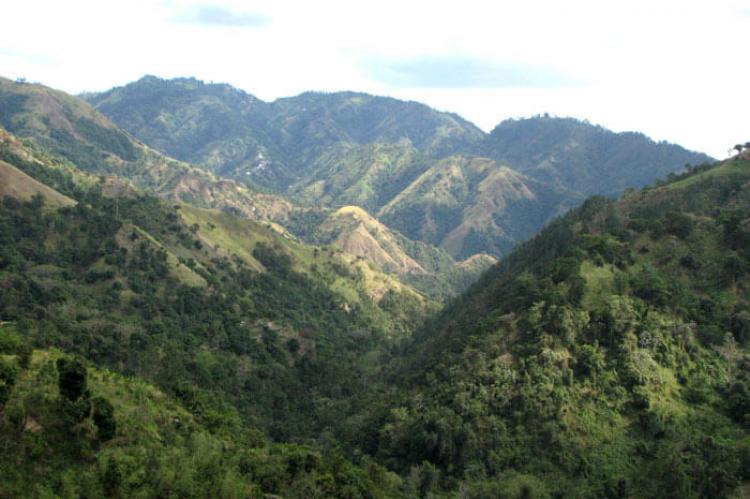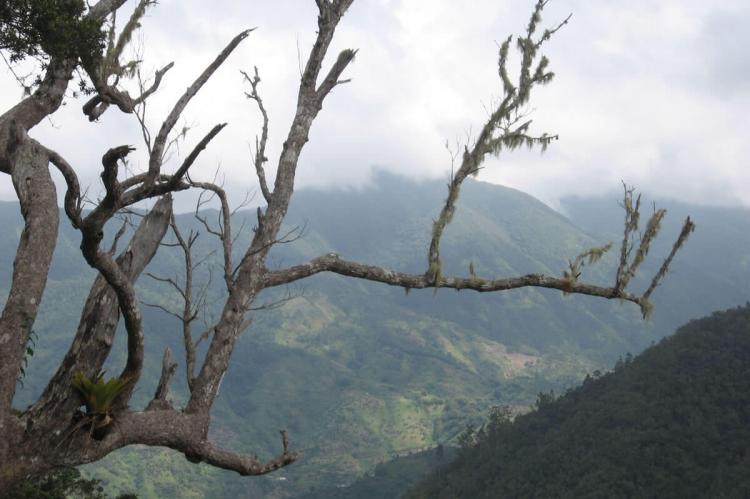The Blue and John Crow Mountains: A Natural and Cultural Jewel of Jamaica
Jamaica's Blue and John Crow Mountains encompass a rich cultural and natural heritage mosaic. They served as a refuge for indigenous and enslaved peoples. This World Heritage Site and National Park boasts exceptional biodiversity, with unique plant and animal species in its montane forests.
The Blue and John Crow Mountains: A Natural and Cultural Jewel of Jamaica
Nestled in the eastern part of Jamaica in the Caribbean Sea, the Blue and John Crow Mountains stand as a testament to the island nation's rich cultural and natural heritage. Encompassing 26,252 hectares (64,870 acres) of tropical, montane rainforest within the larger Blue Mountain and John Crow Mountain ranges, this area covers approximately 20% of Jamaica's landmass. Not only is it renowned for its breathtaking landscapes, but it also holds immense biodiversity significance within the Caribbean region.
Historical Significance
The Blue and John Crow Mountains have a storied past, serving as a refuge for indigenous Tainos fleeing slavery and later becoming a sanctuary for Maroons—formerly enslaved peoples who resisted European colonial rule. The Maroons established a network of trails, hiding places, and settlements, creating what is now known as the Nanny Town Heritage Route. Their connection to the land was deeply spiritual, evident in their religious rites, traditional medicine practices, and dances. Even today, Maroon communities maintain strong spiritual associations with these mountains, preserving their cultural legacy amidst the lush greenery.
Biodiversity Hotspot
Within the Jamaican Moist Forests Global 200 priority ecoregion, the Blue and John Crow Mountains boast incredible biodiversity. It is recognized as one of the 78 most irreplaceable protected areas for conserving the world's amphibian, bird, and mammal species. Additionally, it serves as a Center of Plant Diversity, an Endemic Bird Area, and contains two of Jamaica's five Alliance for Zero Extinction sites. The area is home to a plethora of endemic plant species, including lichens, mosses, and flowering plants, making it a haven for biodiversity enthusiasts and researchers alike.
Protected Status
Legally well-protected, the UNESCO World Heritage Site falls within the boundaries of the Blue and John Crow Mountains National Park, aligning with the park's Preservation Zone. This designation ensures the strictest levels of protection within the zoning system, safeguarding the area's ecological integrity for future generations.
Blue and John Crow Mountains National Park
Expanding over 41,198 hectares (101,313 acres), the Blue and John Crow Mountains National Park encompasses Jamaica's highest point, the Blue Mountain Peak, which stands 2,256 meters (7,401 feet) above sea level. The park represents 4.4% of Jamaica's land surface and is characterized by its diverse ecosystems, ranging from 850 meters to the peak's towering elevation.
Ecological Diversity
The park's high elevation, rugged terrain, and north and south-facing slopes give rise to various habitats, housing nine distinct ecological communities within the upper montane forest of the Blue Mountains. The Mor Ridge Forest stands out for its unique characteristics, including a deep layer of acidic humus adorned with bromeliads and endangered tree species. As altitude increases, the vegetation transforms, with stunted trees dominating above 1,800 meters (5,900 feet), earning the moniker "Elfin Forest" above 2,000 meters (6,500 feet) due to its enchanting appearance cloaked in epiphytes like hanging mosses, ferns, and orchids.
Conservation Efforts
The National Park's buffer zone, spanning some 28,494 hectares (70,410 acres), further contributes to conservation efforts, protecting critical habitats and wildlife corridors essential for the park's ecological resilience. These efforts, combined with the strict preservation measures, ensure the continued protection of the park's rich biodiversity and cultural heritage.
In conclusion, the Blue and John Crow Mountains and its National Park stand as jewels in Jamaica's crown, offering unparalleled natural beauty and a window into the island's vibrant history and cultural heritage. As a beacon of conservation and sustainable stewardship, this UNESCO World Heritage Site and National Park serve as a testament to the importance of protecting our planet's most precious ecosystems for generations.

